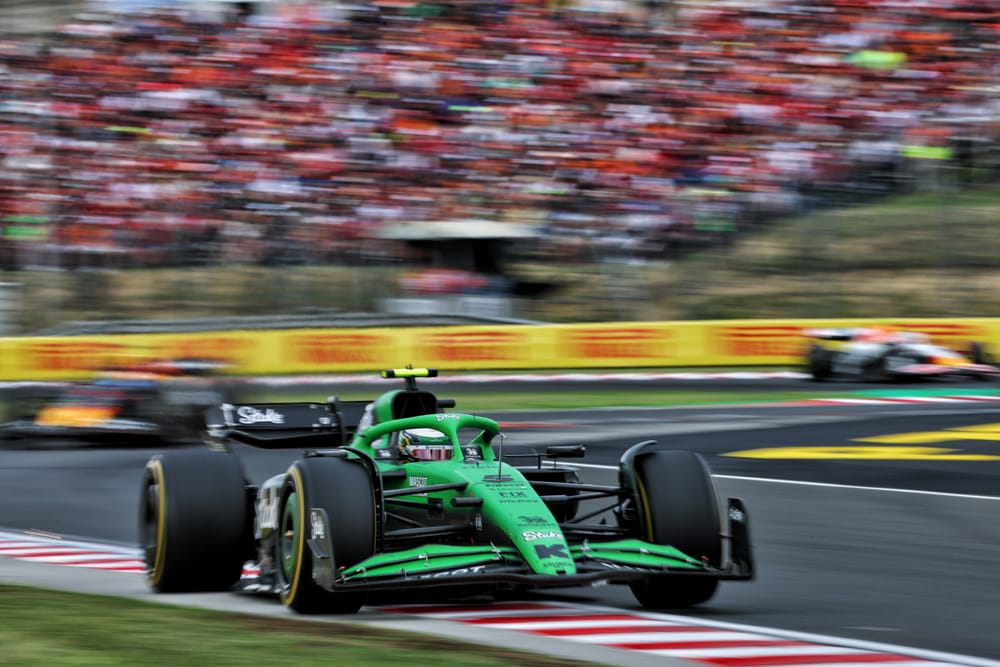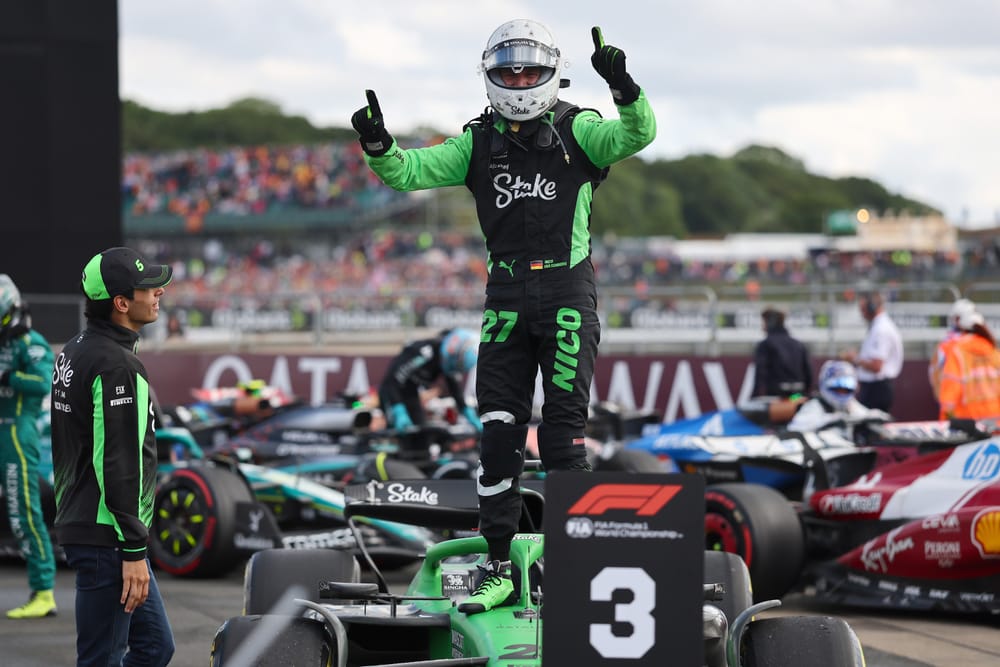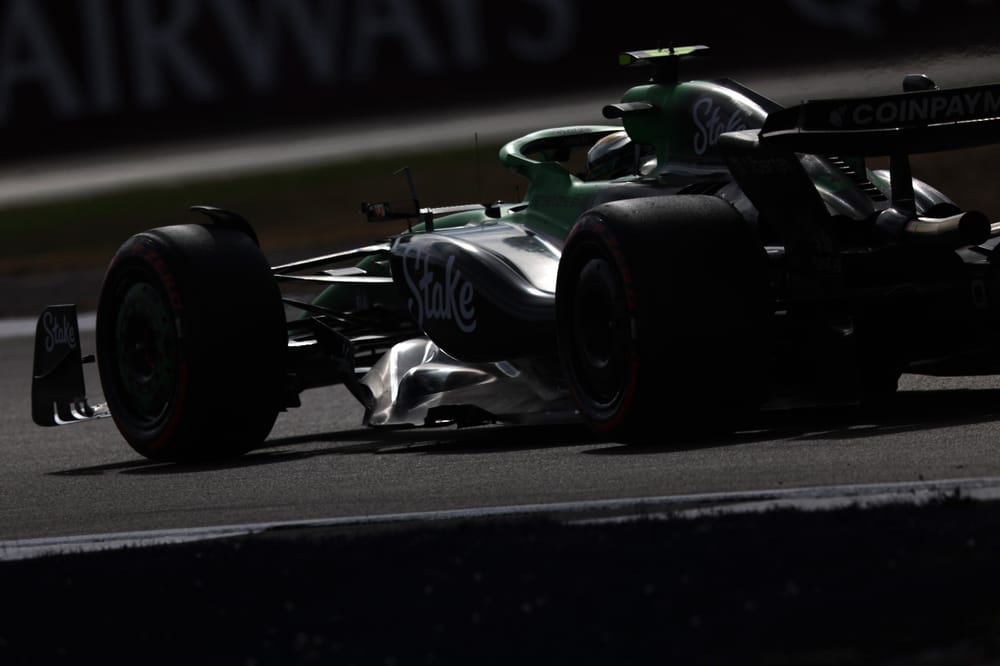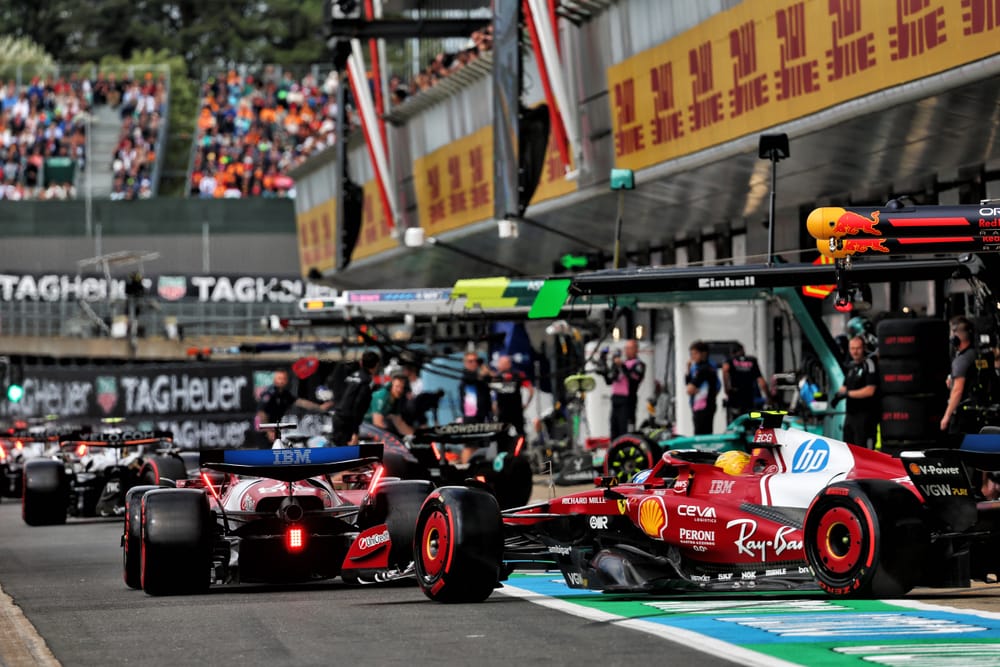The notion that Sauber could emerge as the leading contender in Formula 1's midfield was laughable after what Nico Hulkenberg later described as "major trouble" during pre-season testing.
The car was slow, unwieldy and didn't behave as the simulation tools predicted. Yet in the six events leading up to the August break, it was transformed and, for the first time since Audi began taking control in 2022, the points flowed. So what changed?
Pre-season testing was somewhat misleading. The car was awful, but it also wasn't the proper 2025 Sauber given the decision to maximise development time before going into production.
As technical director James Key explains, this was "because we wanted to extract as much as we could out of that car, knowing '26 was coming".
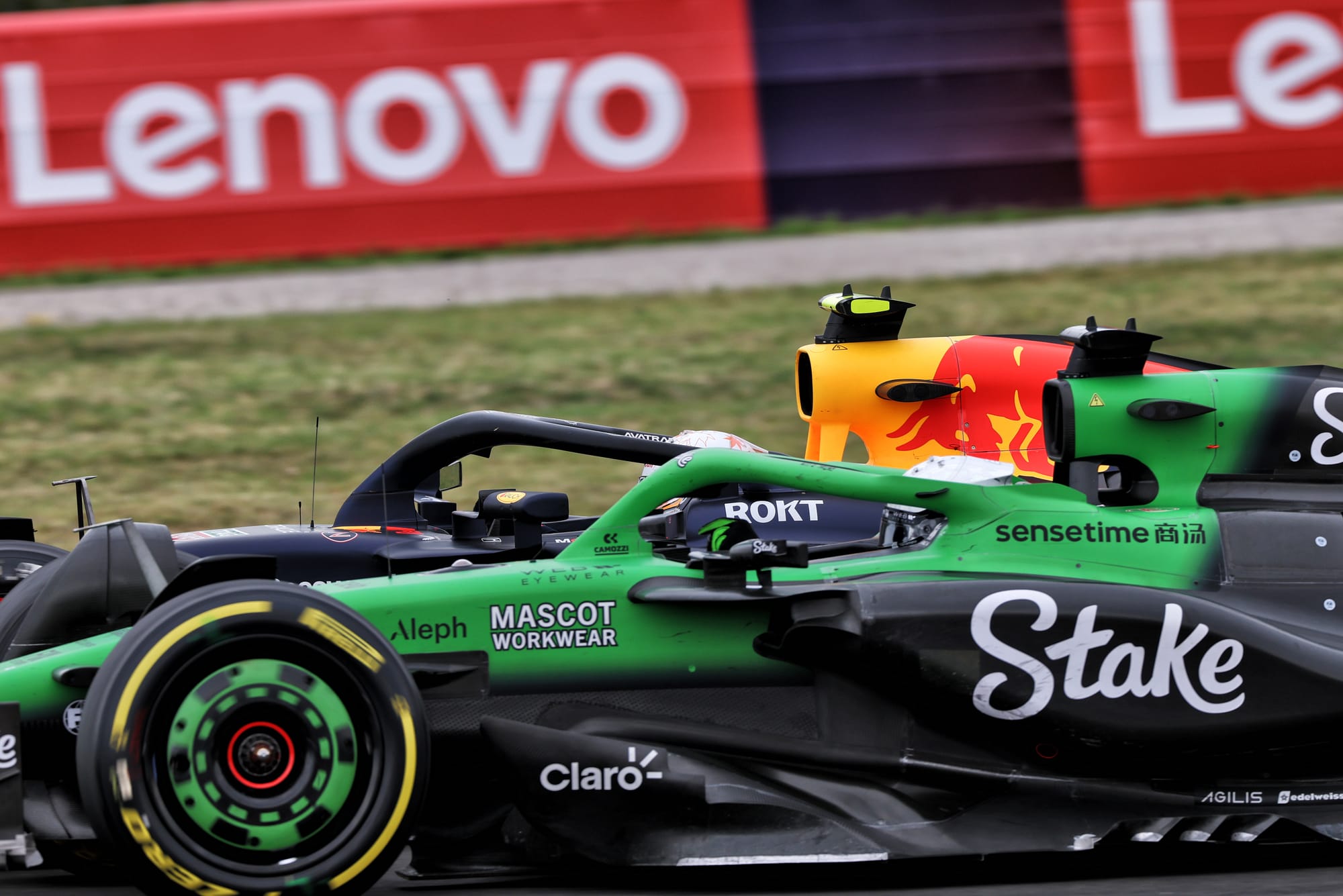
It wasn’t until the upgrade introduced at the season-opening Australian Grand Prix, comprising a new front wing, floor and bodywork, that the true 2025 Sauber C45 hit the track.
That improved the car to the point where it could nick a Q2 place with a perfectly executed qualifying. But Hulkenberg's seventh place in the race, thanks to a well-timed pitstop for intermediates, was the sole points finish Sauber managed in the first eight races.
"The car did not do what we expected it to when we hit Bahrain, and this was the story of last year as well," Key tells The Race.
"We got a bit of a nasty surprise. Having said that, the aero spec in testing wasn't the race spec. The Melbourne spec was what the intended race car should have been, so that did make a bit of a difference.
"But it still wasn't performing in the way we expected or wanted. Although we did some stuff for [race three at] Suzuka, we then stepped back. We did a load of homework in the background and introduced what was going to be an Imola update in Barcelona [two races later than planned]."
Key argues winter testing should be taken with "a pinch of salt" given the car-spec limitations and problems the team was working through.
However, the Australia step only meant Sauber was at the back rather than well off it. While a vast improvement from testing, early on in the season the car was still not competitive, especially in races.
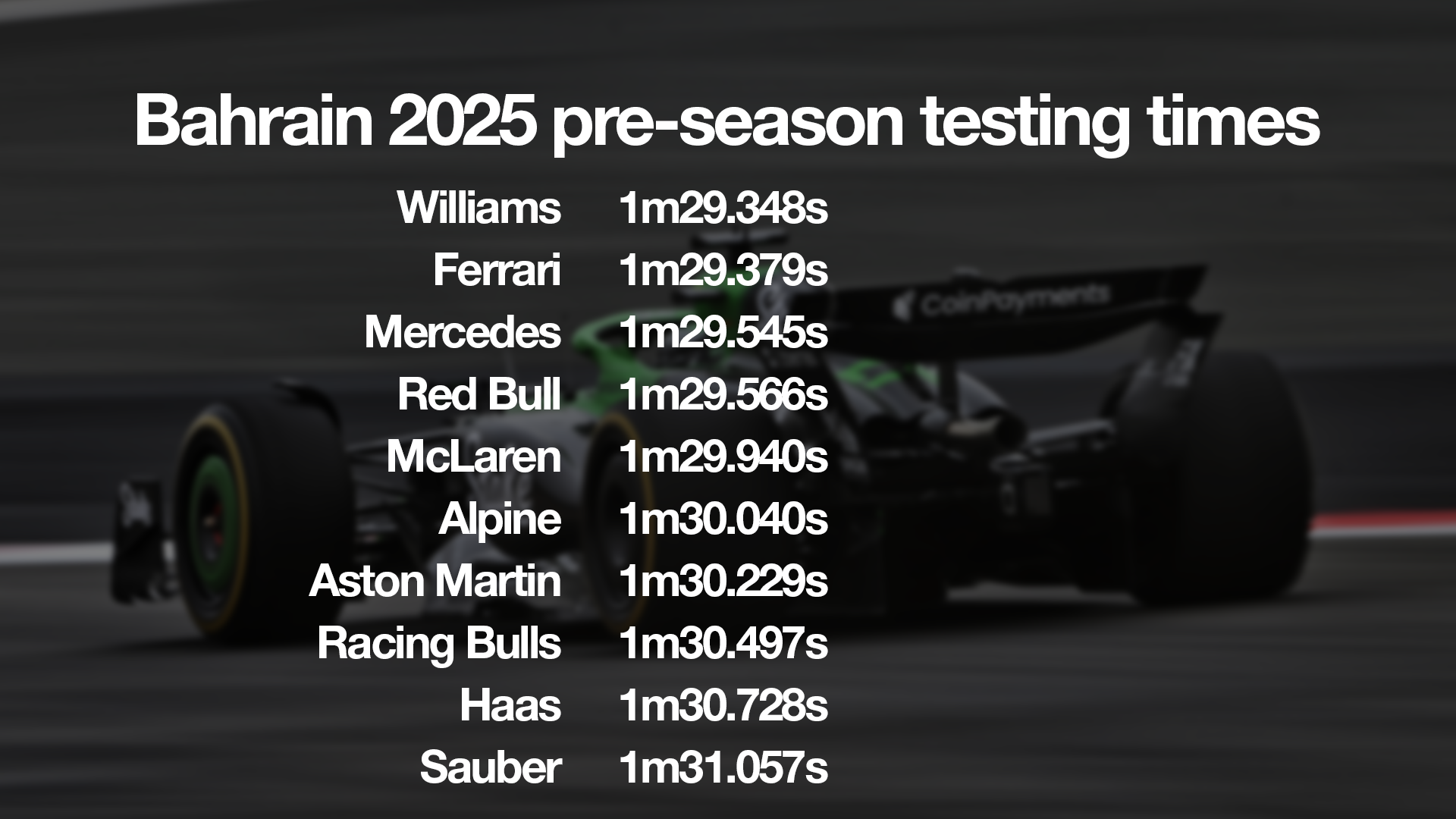
The plan had been to hit the ground running in 2025 off the back of a late-season upgrade last year that allowed it to compete for points, with Zhou Guanyu bagging eighth place in Qatar.
The expectation was that trajectory would continue, but things going badly wrong highlighted underlying problems.
"We felt fairly safe doing that because the car, we came off the back of Nico Hulkenberg driving it in the Yas Marina test in '24 and he said, 'Actually, I’m really pleasantly surprised by this because this feels good'," says Key.
"Our assumption was we'd waltz into '25 with the updates we'd done and have the same situation. But we didn't."
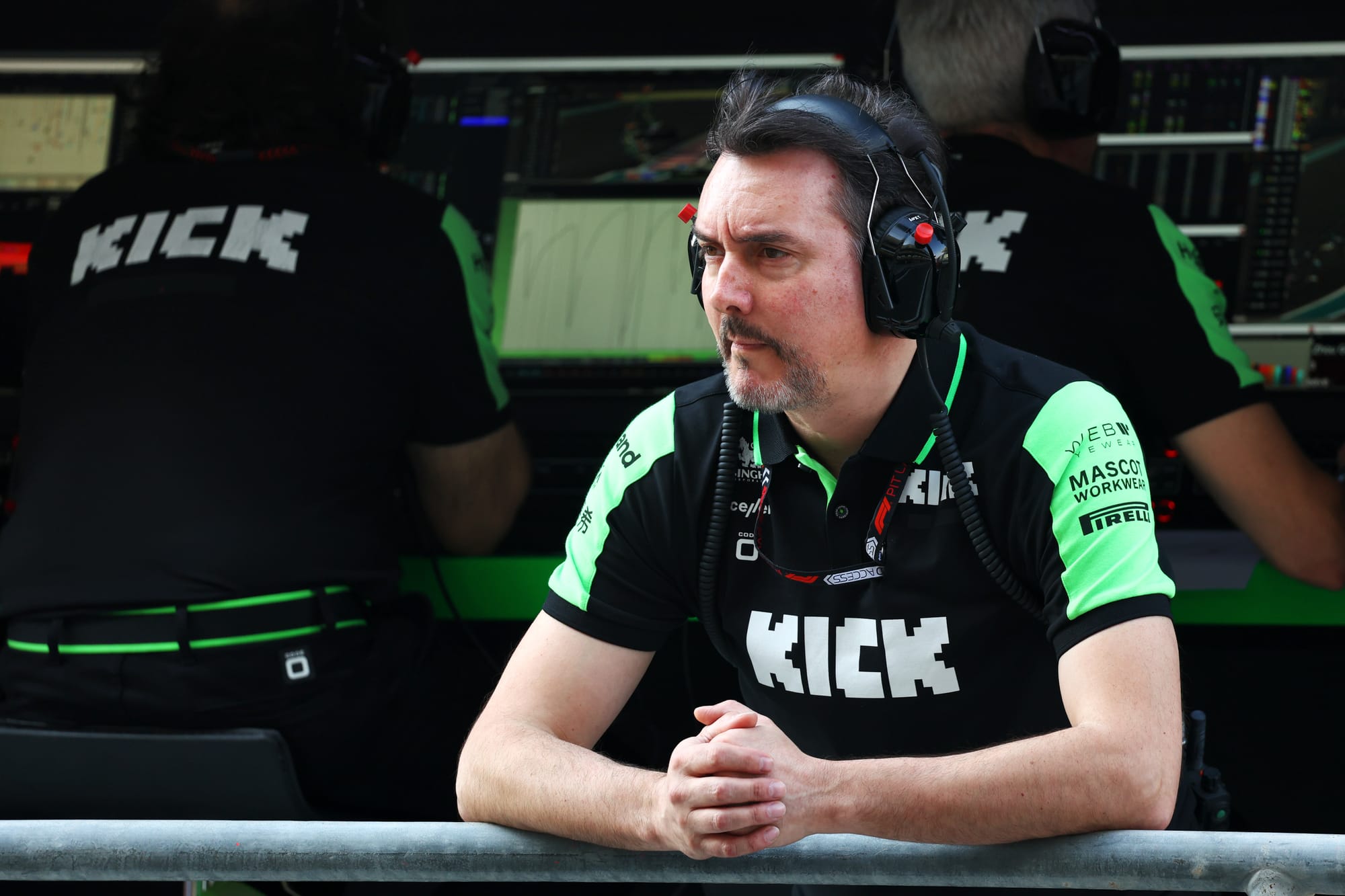
Across the early months of 2025, the car was inconsistent and peaky. It was particularly poor in turbulent air, more so than any other car, but that reflected the fact that it wasn't robust enough aerodynamically.
The erratic downforce production made it difficult to drive even in clean air, and even at its best in qualifying with fresh, sticky tyres temporarily mitigating its vices it was still not giving the drivers any confidence.
This was the problem Sauber had to get to the root of with what Key calls homework.
"What emerged was a whole set of subtleties in tool accuracy and correlation, in how advanced our processes were, but you had to dig deep to find them," says Key.
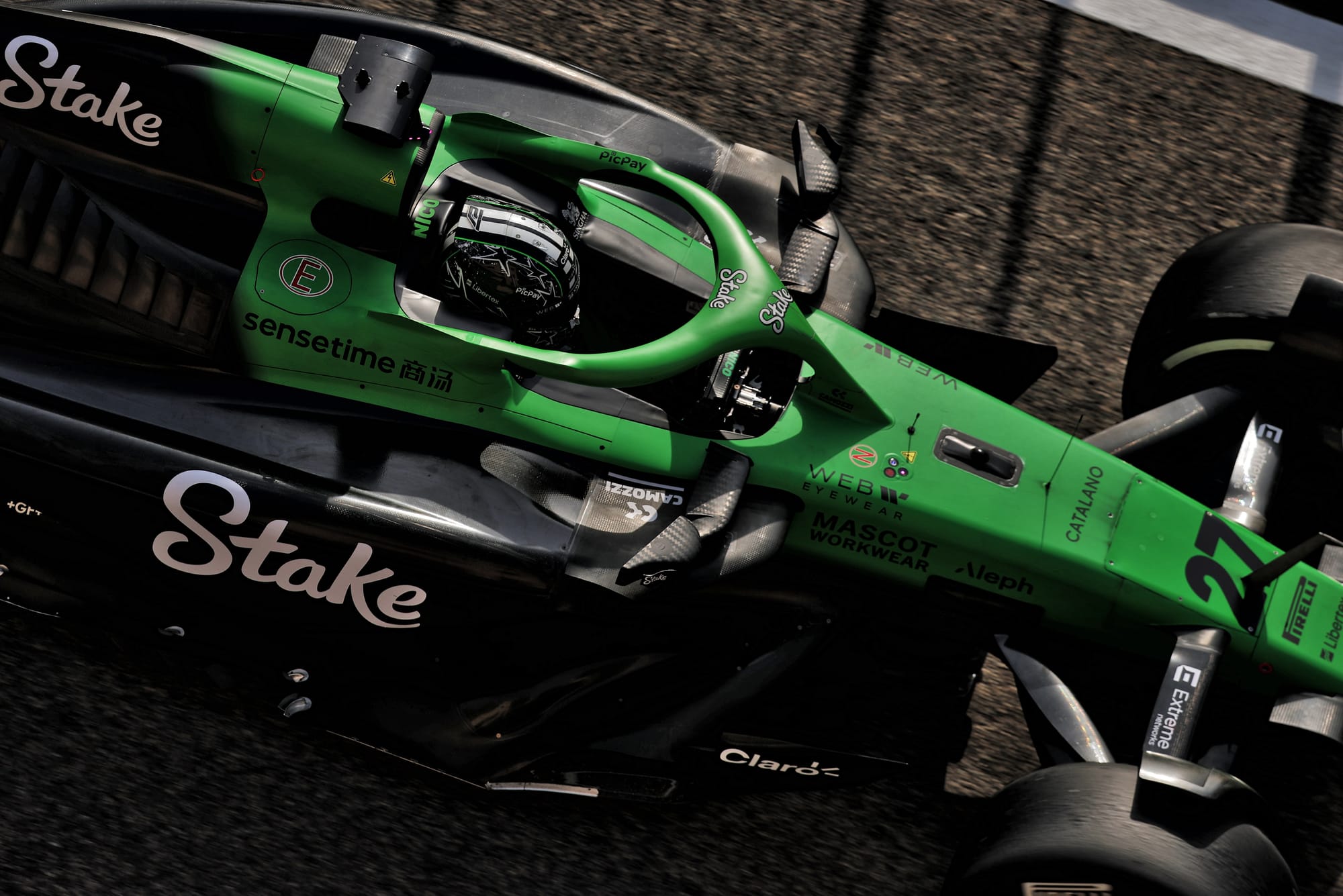
"These cars are on the ragged edge, and on reflection our processes simply weren't mature enough to cope with that level of detail and that level of really hard-stressed aerodynamics.
"So it was a lot of philosophical discussions. We went into what was going to be Imola [upgrade], which then became the Barcelona update and actually found quite a lot [of performance] having done the homework.
"If you look at the downforce numbers we're talking about, it was fairly decent, but the effect on track was massive in comparison. And then, because we had the direction emerging, we were able to follow up quickly with your next logical steps, which we did in Austria and Silverstone."
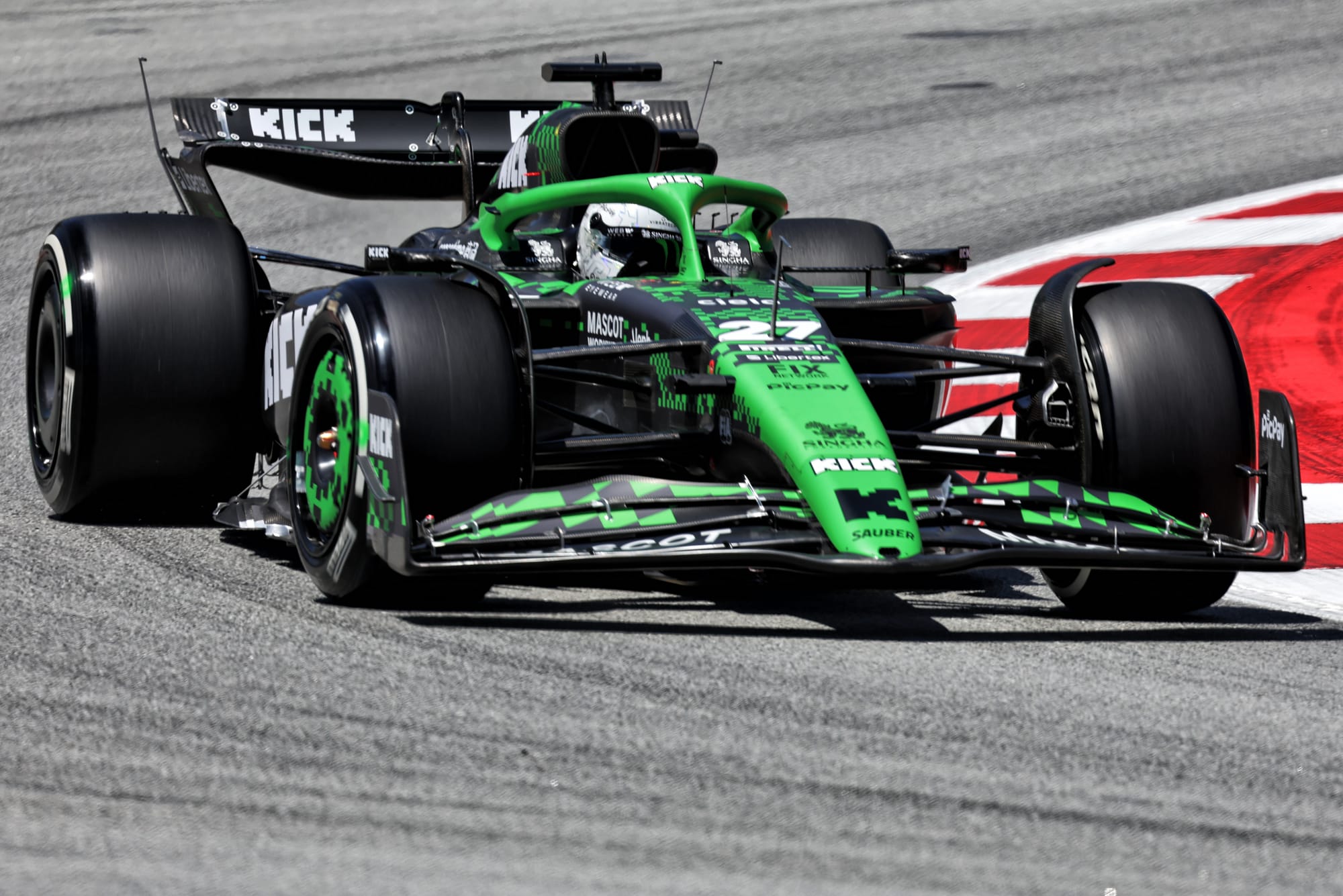
The upgrade first ran on Hulkenberg's car in Friday practice for the ninth round of the season in Spain (above).
That test went well, meaning Gabriel Bortoleto's car was switched to the upgrade on Saturday and both drivers recognised the improvement immediately.
While the car didn't become easy to drive straight away, it did become a lot more predictable and allowed both to push harder. That was reflected in strong race pace and, although his fifth place in Spain was helped by circumstances, Hulkenberg was destined to finish ninth on merit even without such opportunities.
The strong race pace reflected the compound gain of the upgrade, the result of a car that was not only faster but also gave the drivers confidence. That Sauber was able to make this step and then follow it up with two further floor changes that weren't originally intended and delivered further gains is testament to the progress made.
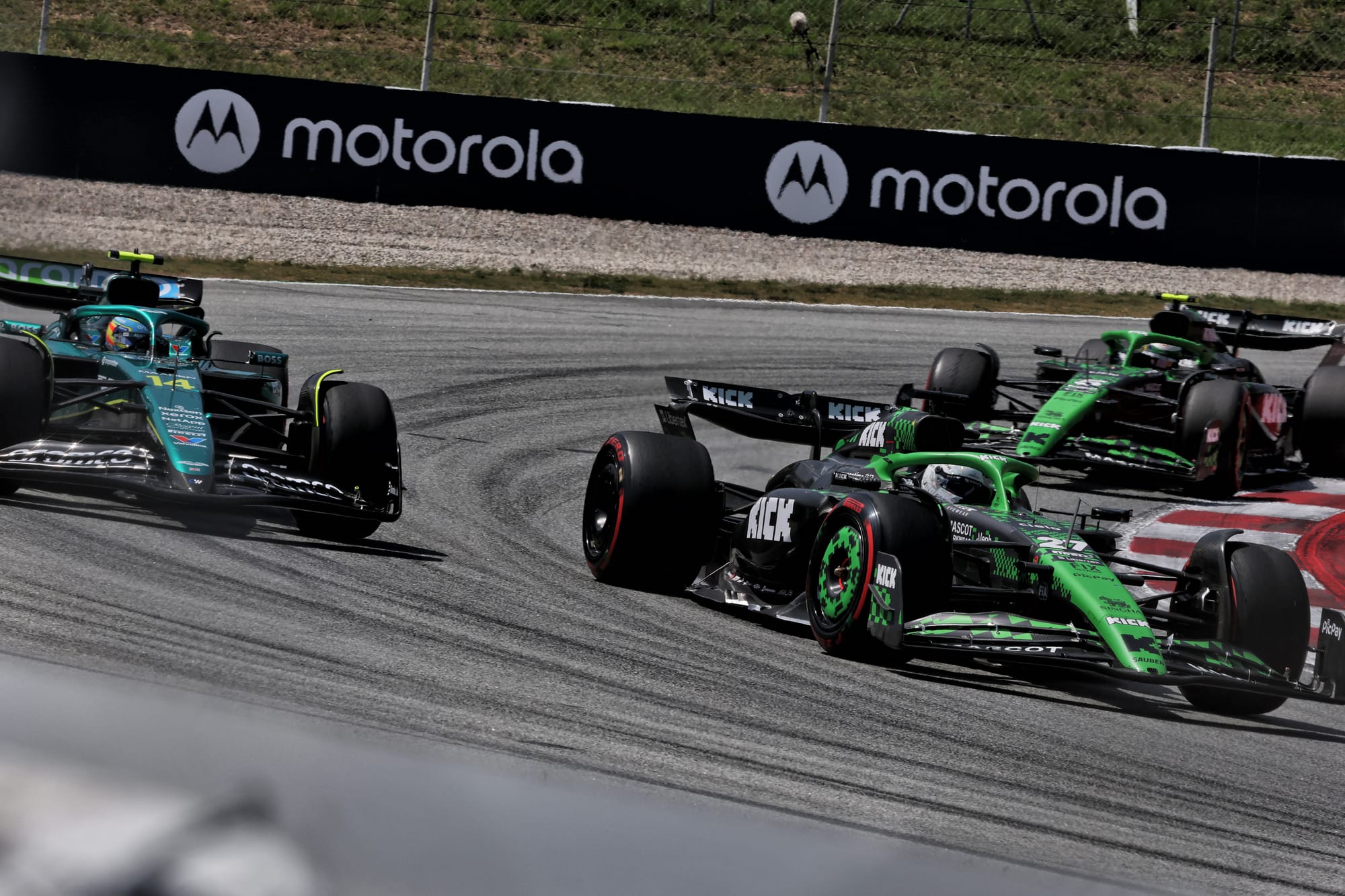
"It's incredibly close, so even when you're struggling it's only by a tenth or two," says Key. "There have been several races recently where it's been eight tenths in Q1 from P1 to P20, so you are talking hundreds and thousandths. If you have a team which isn't doing very well, it's because they're missing that couple of tenths they need to be doing much better.
"It's so compressed, but there is a pecking order, and if you get it wrong you're towards the back of that, if you get it right, you're further up.
"Secondly, the downforce on these cars now is crazy high, the numbers are absolutely astronomical, but it means that all the flow structures are really, really critical. You can easily trip over that and find that it just doesn't do what you thought it should do, or it just gets a bit messy because you're just on the ragged edge.
"For us, the processes were struggling a bit when you get to that level, they weren't really picking up the criticality of everything.
"The whole process is [extensive]. Are the floor fences as rigid as they should be on the car on the track or are they just doing this a little bit and then suddenly you're losing something? We're really at that level.
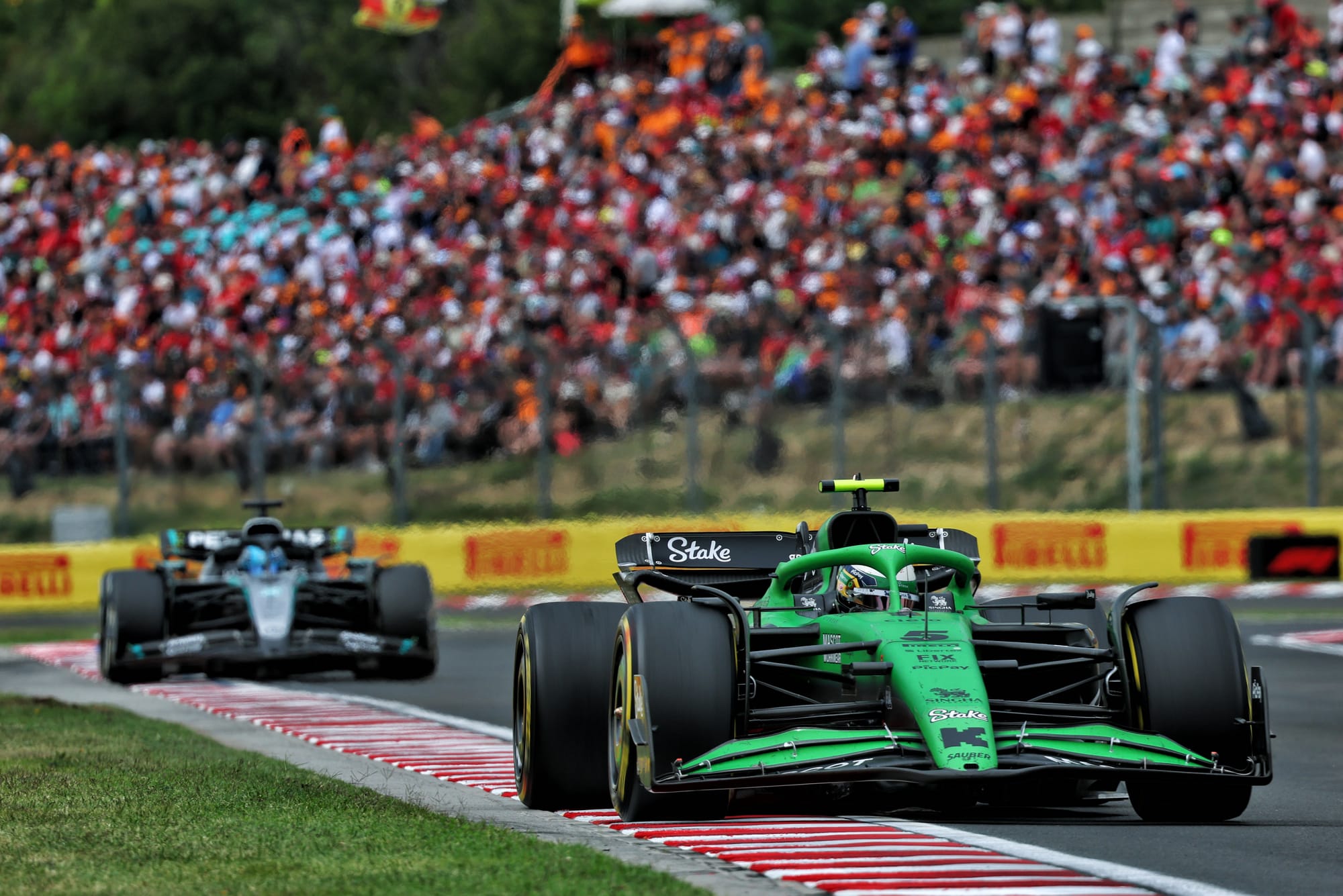
"For us, it was this iterative thing, really diving into the detail of why this isn’t delivering.
"We know that now, we've learned some rules that will apply to next year's car as well in that respect, which is great, but there's a certain set of criteria that you've got to tick off to make sure it's going to deliver.
"Imagine a massively long, complex equation: how to solve a Formula 1 car? We all know roughly what the answer looks like, and you've probably got half of that equation, but the other half is all blanked out and that's the bit you're trying to figure out.
"It's really tough, and you could get close or you could be miles off. Those with the best tools to answer that difficult bit of the equation are able to produce more robust aerodynamics and a faster car, and those who didn't really have those tools in place struggled more. And that's where we were when I joined the team."
What Key is talking about here is symptomatic of the level of detail teams must master to get results. The intriguing mention of bodywork flexibility raises the question of how big a part of the equation the structural design and production processes were in this.
"That wasn't the cause of our issues, but certainly the accuracy of the parts, the surface finishes and aeroelasticity that was not purposely designed were highlighted when we did some filming work," says Key.
"We researched this really intensely. We were filming under the floor and seeing that things were moving in an unexpected way or even oscillating a bit sometimes.
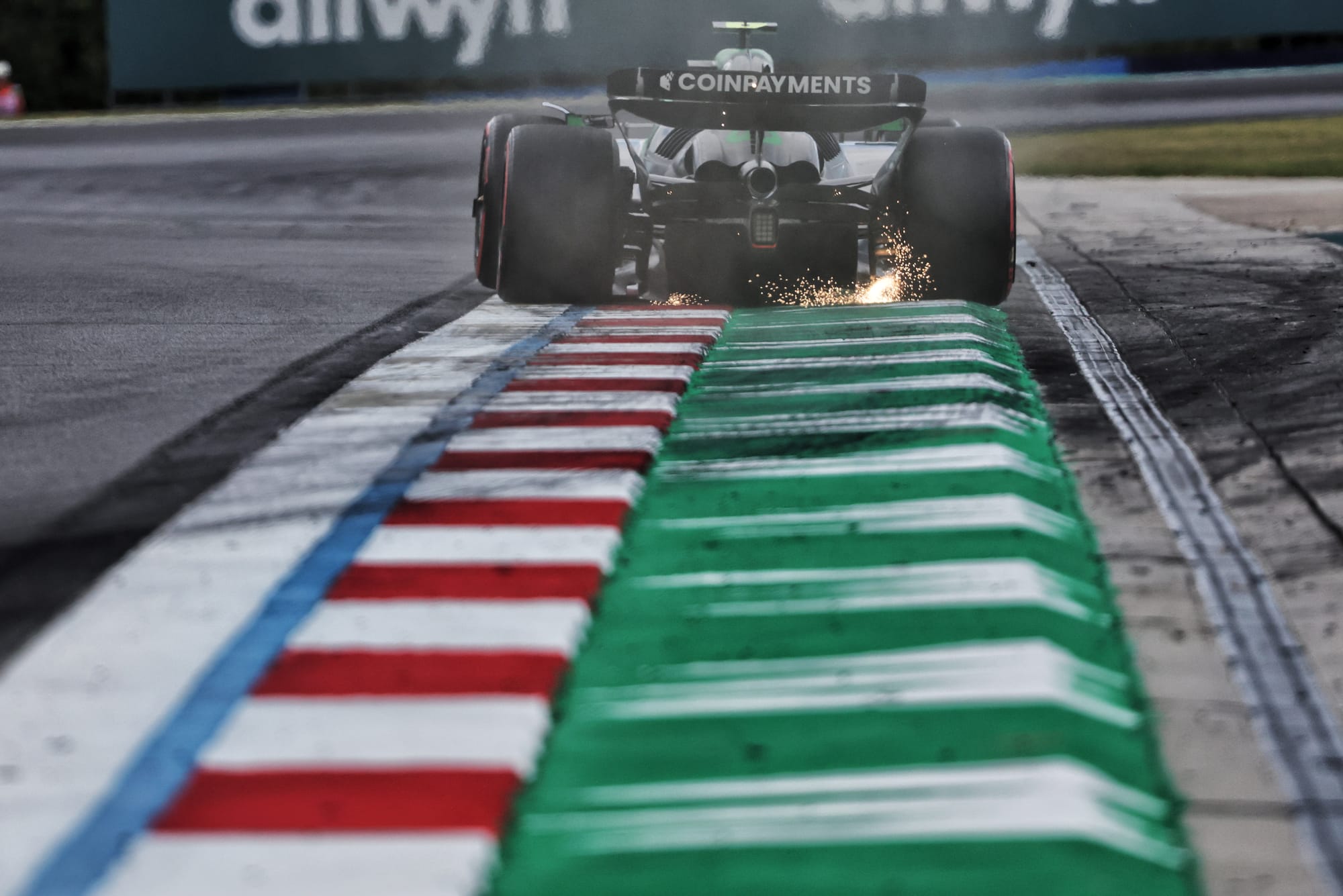
"We incorporated a round of quality improvement in the design, in the production and the accuracy in QC [quality control] to make sure everything was working."
The Sauber C45 is still difficult to get the most out of in qualifying. Key concedes the car is "a little bit less easy to drive at low fuel", but strong when running heavier, which has played a big part in being able to score points in each of the past six events even when qualifying has been disappointing.
On top of that, good execution by team and drivers has contributed, showcased by Hulkenberg's astonishing third place in the British GP and explored in depth in this article.
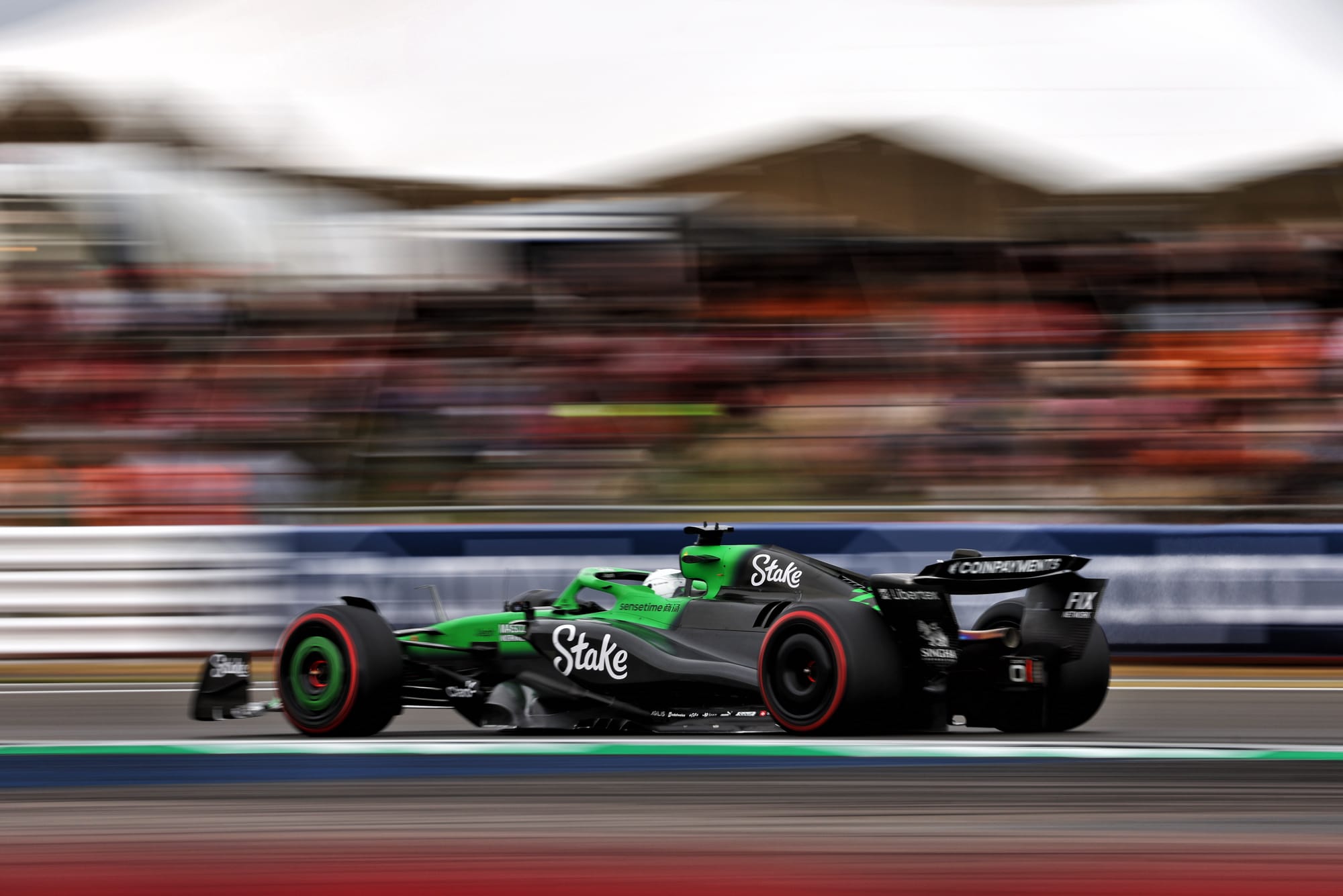
"It's slightly more on the edge," says Key of the car in qualifying trim. "It's probably a little bit more mechanical [from] the way the drivers describe it.
"This is not unheard of at all, but obviously a very light car with a lot of grip and punching the kerbs hard is going to give you a certain sort of response through the suspension, whereas if you've got a car travelling more slowly with a lot more weight, you'll get a totally different response mechanically.
"And it seems that mechanically, the car is more at ease with high fuel than it is with low fuel."
That's proof that Sauber still has a huge amount of work to do. Given the focus on 2026, the team had what Key calls "special forces with a very targeted approach" working on the 2025 recovery but, while there are still some parts to come, there will be no more packages as extensive as the one introduced in Spain and its follow-ups.
Some of the changes will be mechanical, conceived to tackle the problems Key has pointed to that particularly manifest themselves in qualifying. But with all teams winding down their upgrade programme, the Sauber should remain a consistent points threat in the second half of the year.
This has transformed the esteem in which Sauber is held in and means it no longer looks like a team meandering aimlessly ahead of its Audi facelift.
A sense of proportion must be maintained given the recovery this year has really only turned Sauber into a team performing at about the level it should be at.
But it's evidence that, under the leadership of Mattia Binotto (who holds the dual role of chief operations officer and chief technical officer), new team principal Jonathan Wheatley, and Key, it is finally getting somewhere.
While the troubleshooting in 2025 has probably made a small dent in the resources devoted to 2026 development, the knowledge gained should outweigh that given it can be applied to next season even with completely different regulations.
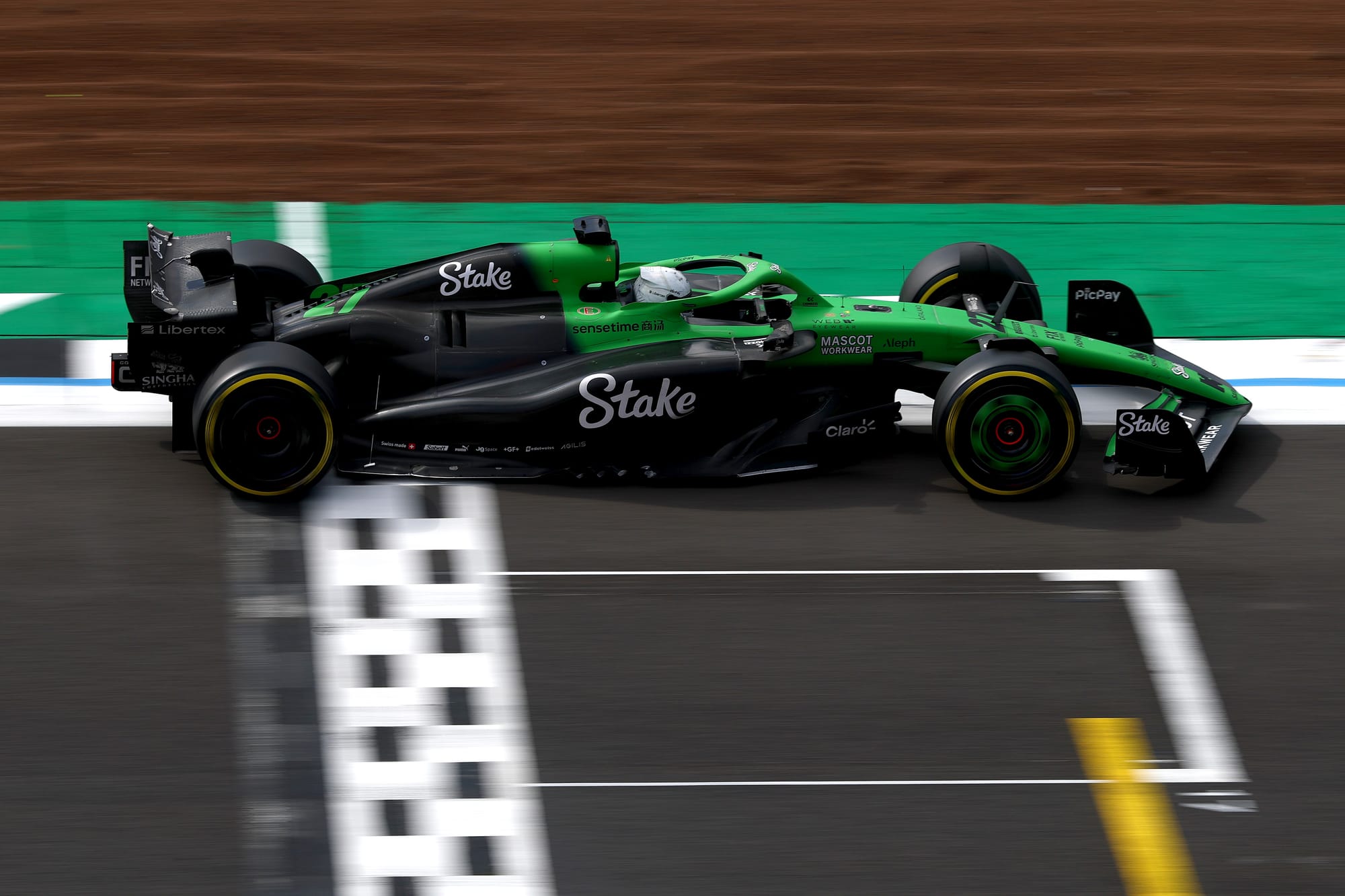
Sauber's performance this year has taken a big step because it's made a breakthrough in the underlying science of designing, developing and producing F1 cars. Or, to use Key's metaphor, it understands a little more of the equation than it did before.
"Internally, there was always confidence because '26 is the opportunity for a reset," says Key.
However, the pains of this year were necessary in order to make the improvements needed to avoid being cast adrift next year when it comes to chassis performance. That's a positive, although how strong Audi’s power unit is remains to be seen.
"Yes and no," says Key, when it's put to him that the team seemed to be going in the wrong direction before this process started but now is finally going in the right one.
"Outside perception, yes, team confidence, yes, but none of us had any doubt that this was going to work.
"We had these discussions after I joined - don't equate '26 to what we have now. The team survived, which is great, there had been a little bit of investment in some key areas, but it clearly didn't have the manpower and budget to attack some of those in the way that many other teams have.
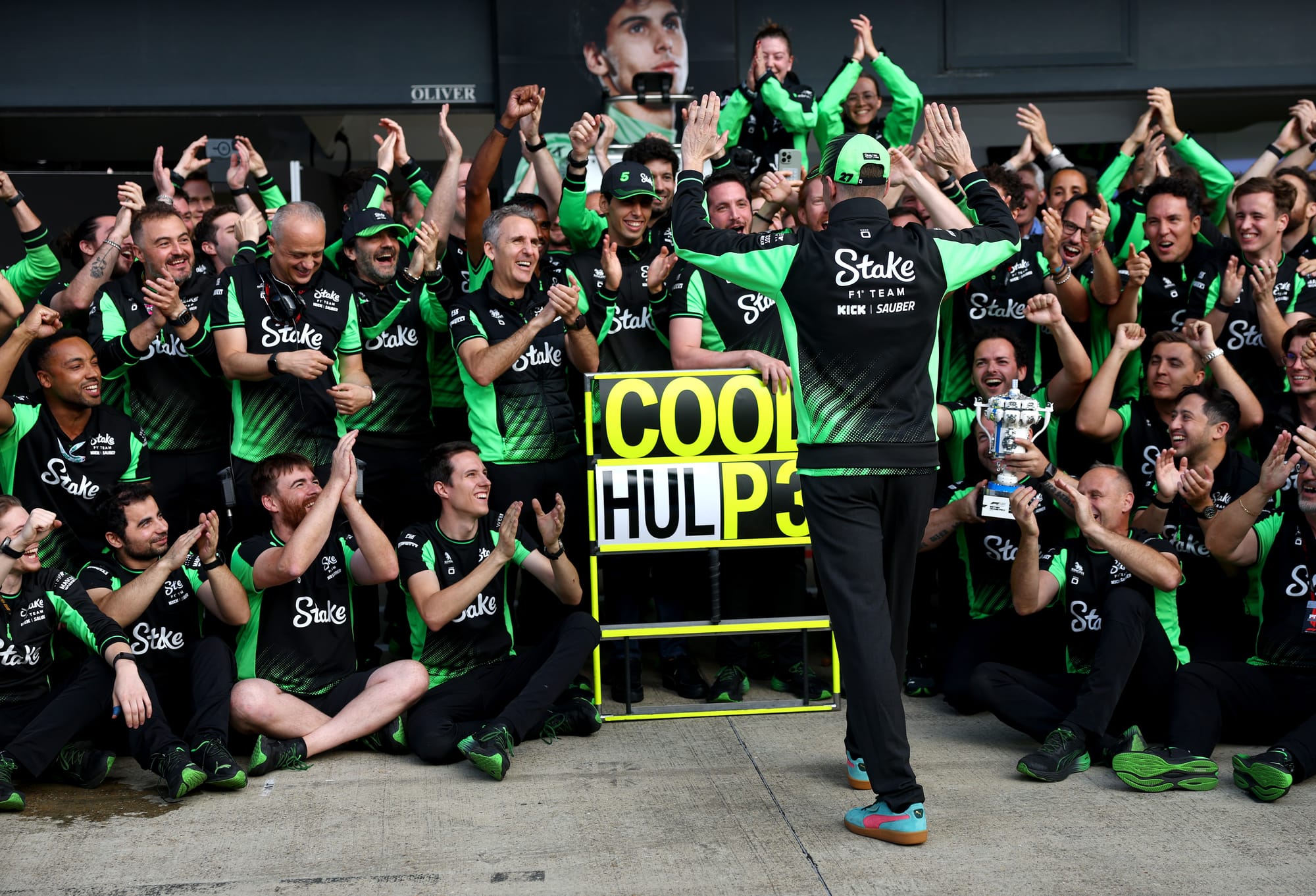
"And the reality is the people that we have in Sauber are absolutely fantastic.
"There are pockets of incredibly high-level work, better than I've seen in all the other teams I've been at previously, so there are pockets of brilliance all over the place.
"There are plenty of areas which have needed to be improved, with tools, with investment, with more people, a bit of restructuring, but there was never any doubt that by '26 we'd be in a position where we could progress.
"These cars have a lot of legacy in them. Some of the sensitivities on our current car are still not really where you'd like them to be, and I know from my own references that certain things are definitely too sensitive.
"But to dial out a sensitivity is really difficult to do when the car has grown up with that. You can do it by losing downforce, but that's going to make the car go slower.
"There wasn't time to do that, so by resetting for '26 you can get rid of all of that stuff and make sure no legacy unpleasantness is there."
Sauber still has a long way to go to deliver on Audi's aims of fighting for wins and championships by the end of the decade. But recent months have made that ambition at least look more realistic - and for good, sound technical reasons.


